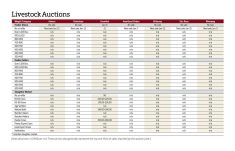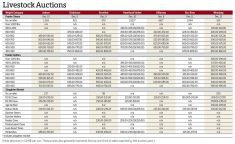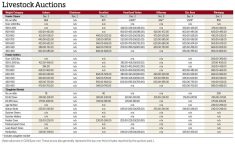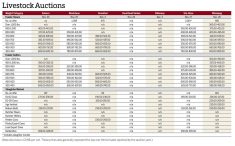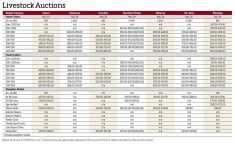Despite the typical peak-summer doldrums for cattle sales in Western Canada, prices are at some of their highest levels in months, according to one analyst.
Anne Wasko, a cattle market analyst for Gateway Livestock Exchange Inc. in Taber, Alta., said markets for Western Canada have been steadily improving in 2022 as they recover from the effects of last year’s drought.
As of August 4, “fed cattle in Western Canada are at the highest prices they’ve been this year,” she said. “It hasn’t been an explosive market, but it’s been a ‘grinding higher’ market.”
Read Also
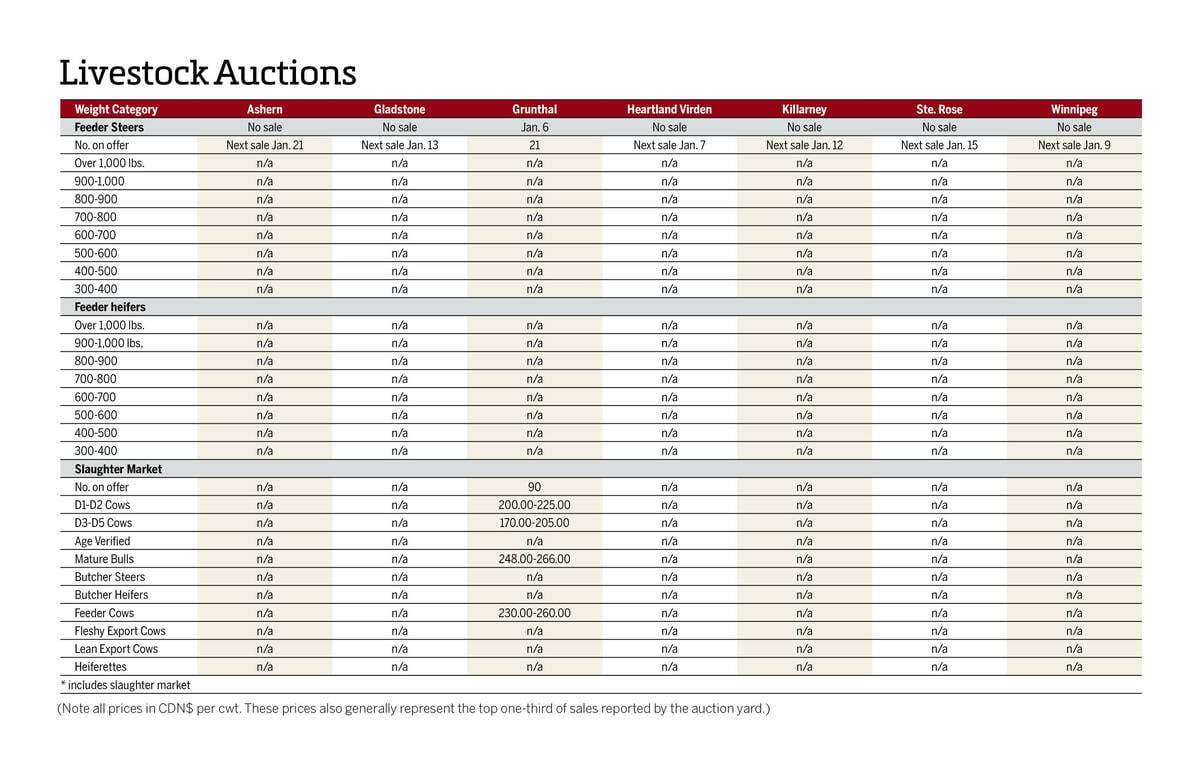
Manitoba cattle prices Jan. 6
Grunthal was the first Manitoba livestock auction mart to kick off 2026 cattle sales in early January.
On August 3, the August live cattle contract on the Chicago Mercantile Exchange traded at US$138.30 per hundredweight (cwt), its highest since April 27. Wasko attributes the increase to tightening cattle totals.
She also said the highest D2 slaughter cow price in Western Canada since 2015 occurred over the last week of July. On the week ended July 29 at Manitoba cattle sales, D1 and D2 cows ranged from C$95 to $115 per cwt. During the week ended July 30, 2021, prices ranged from C$61 to $85.50.
“We were dealing with a big run in 2021 due to the drought. That’s not the case right now and prices have been very strong for culled cows,” Wasko said.
“That is largely driven by two things — the smaller supply, because we aren’t in the midst of a drought run, and secondly, we continue to see good demand for hamburger beef across North America.”
While drought conditions continue in parts of Alberta, Saskatchewan and the United States corn belt, they are not as widespread as in 2021, allowing for greater yields and crop production. The resulting declines in wheat, corn and barley prices are already influencing the cattle market.
“The lower those feed prices go as we get into harvest, the better news it will be for cattle prices this fall,” Wasko said.
However, input costs have had the greatest negative impact on producers’ bottom line. Weather-related costs also remain high as the result of flooding in Manitoba and dry conditions in other parts of the Prairies.
“In parts of Saskatchewan, for example, they’re still very much dealing with the third year of a drought (along with) grasshoppers and the issues coming with that,” Wasko added. “There’s been lots of volatility. Mother Nature always provides us with challenges and they are still the top challenges for cattle producers in 2022.”
She expects yearling cattle to peak for the year in late August and early September when most auction sites return from their summer break.
“The trend looks solid for feeder cattle. The calf run is typically in October and November and it’s very quiet right now — very few calves being pre-sold early compared to what was sold last year,” she said, adding that higher feeder cattle prices are expected at the start of the fourth quarter.
“All markets are pointing to a higher price trend as we finish off 2022. The key differential will be what those input costs and what the final feed prices end up being. (There are) still some challenges out there, but prices are heading in a stronger and higher direction.”




